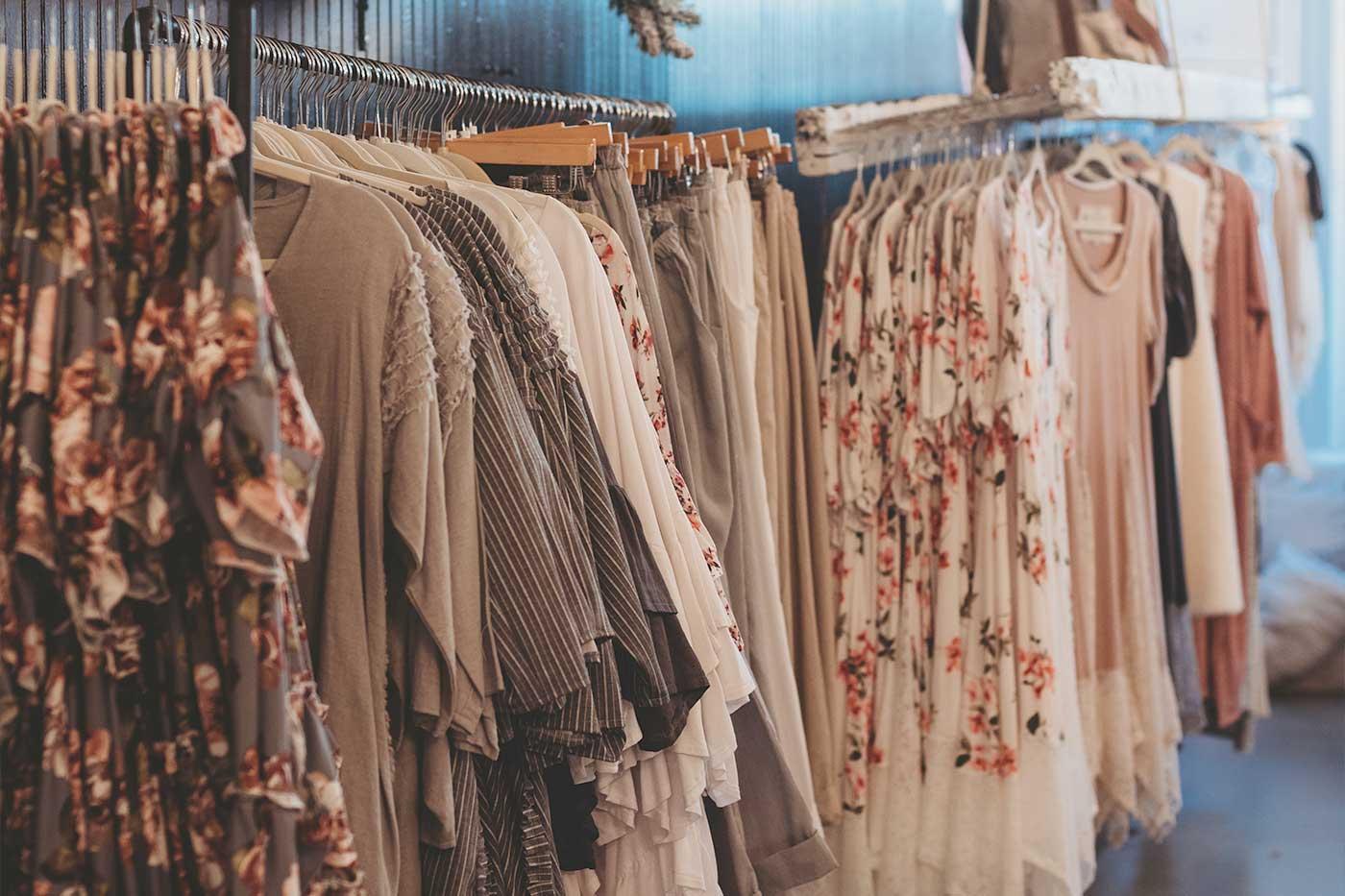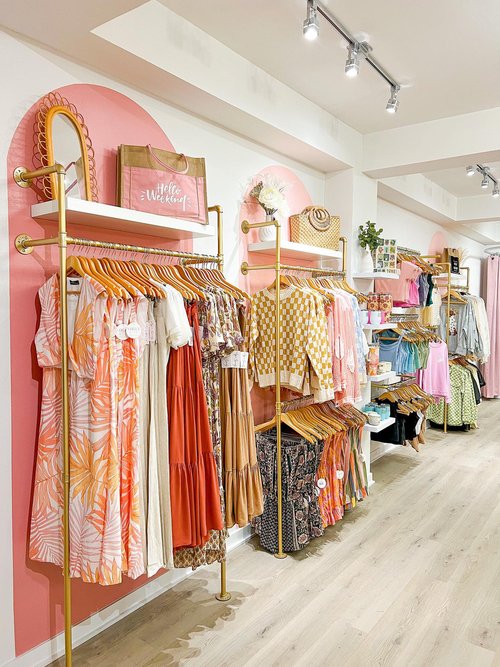The Influence of Social Media on Today's Boutique Fashion Trends
The Influence of Social Media on Today's Boutique Fashion Trends
Blog Article
Discovering the Development and Impact of Garments on Modern Fashion Trends
The evolution of clothes has actually considerably influenced modern-day fashion patterns, combining historical precedents with sophisticated advancements. Legendary figures like Coco Chanel and Yves Saint Laurent revolutionized the fashion industry by presenting concepts that focus on convenience and availability, which proceed to resonate today.
Historic Style Influencers
In the tapestry of style background, particular numbers have actually left an indelible mark, forming the trends and designs that define entire eras. Coco Chanel, a cutting edge developer, redefined ladies's fashion by introducing comfortable, elegant garments that left from limiting bodices.
Elsa Schiaparelli is another essential figure, renowned for her avant-garde styles that included surrealist art, collaborating with Salvador Dalí to develop wayward items that tested traditional aesthetic appeals. Her innovative usage of shade and vibrant patterns reverberates in modern style. Yves Saint Laurent, at the same time, equalized haute couture with prêt-à-porter collections, bringing path styles to the masses and setting a criterion for modern-day ready-to-wear lines.
These visionaries, amongst others, not just revolutionized fashion in their times but also established enduring fads that reverberate in today's garment industry, providing a foundation upon which modern-day developers remain to develop and introduce. Their legacies emphasize the relevance of creative thinking and bold in vogue's ever-evolving story.
Technical Advancements in Style
Amidst the vibrant landscape of the fashion business, technical improvements stand at the center of advancement, improving exactly how developers create and consumers engage with fashion. The integration of 3D printing has actually changed design procedures, enabling designers to trying out complicated structures and sustainable products that were formerly impossible. This modern technology facilitates quick prototyping, minimizing waste and expediting production times.

Smart textiles, embedding modern technology right into materials, are additionally transforming the sector. Developments like self-cleaning and temperature-regulating textiles use improved performance and convenience. Wearable modern technology, incorporating features like fitness tracking and communication, adds a new dimension to fashion, merging visual appeals with practicality.
Cultural Shifts and Design
As technical innovations remain to improve the fashion industry, social changes are just as significant, redefining design and consumer preferences. Recently, the surge of social media platforms has increased the dissemination of international fashion patterns, enabling diverse social impacts to exist together and merge. This digital interconnectivity has actually facilitated the fast exchange of concepts, causing a more diverse and inclusive interpretation of design that mirrors the diverse nature of modern-day society.
Social understanding and recognition have prompted designers to attract motivation from a broader range of ethnic and historic contexts, incorporating standard motifs with contemporary looks. This fusion has actually resulted in fashion that reverberates with a broader audience, promoting a feeling of identity and belonging across different demographics. In addition, the increasing demand for personalization has actually driven brands to supply adjustable options, making it possible for customers to express individuality while showing their cultural heritage.
Furthermore, shifting societal worths have Extra resources influenced style, with inclusivity and diversity coming to be central motifs. The sector has started to embrace versions and influencers of various body kinds, ethnic backgrounds, and sex identities, tough conventional beauty criteria. This makeover underscores the power of social changes in shaping the future of style, as design ends up being a more genuine expression of cumulative and personal identification.
Sustainability and Modern Design
While the apparel industry remains to evolve, the critical for sustainability has come to be increasingly urgent, affecting contemporary style practices. This shift aims to address moral factors to consider and ecological concerns, causing a reevaluation of traditional production techniques. Developers are now incorporating lasting products, such as organic cotton, recycled polyester, and naturally degradable textiles, right into their collections, reducing the environmental impact of style. The surge of slow fashion, which emphasizes high quality over quantity, motivates customers to website here purchase classic items instead of short-term trends.
Additionally, modern-day layout is defined by its innovation in minimizing waste and advertising circularity. Methods such as zero-waste pattern cutting and 3D knitting are obtaining traction, permitting designers to create garments with minimal textile waste. Furthermore, brands are taking on transparent supply chains, ensuring responsibility and fostering customer depend on. This method not only minimizes ecological effect yet likewise enhances the social obligation of fashion homes.

Future Trends in Style

Sustainability will certainly continue to be a driving force in forming future fashion fads. The market is increasingly taking on environment-friendly materials and moral production approaches, reacting to a growing customer demand for responsible techniques. Developments such as bio-fabricated products and closed-loop recycling systems are readied to redefine how garments is produced and eaten, decreasing ecological impact while keeping style and top quality.
Cultural changes, consisting of the increase of inclusivity and variety, will likewise play a pivotal function. As culture ends up being extra aware of social concerns, fashion is expected to come to be a platform for expression and modification. Developers will likely focus on producing collections that mirror a broader series of experiences and identities, promoting depiction and accessibility.
Final Thought
The evolution of clothing considerably impacts modern fashion trends, where historical influences combine with modern layouts. This recurring advancement highlights style's function as a mirror to societal values and technological advancement, recommending a future abundant with advancement and inclusivity.
The development of garments has considerably influenced modern style patterns, merging historical criteria with sophisticated advancements.In the middle of the have a peek at these guys dynamic landscape of the fashion sector, technological developments stand at the forefront of innovation, improving exactly how designers develop and customers engage with style.While the style industry proceeds to progress, the necessary for sustainability has become significantly urgent, influencing modern-day style practices. As sustainability comes to be embedded in modern-day style, it paves the means for a more conscious and liable fashion sector.
The development of clothing substantially impacts modern-day fashion fads, where historical impacts merge with modern designs.
Report this page